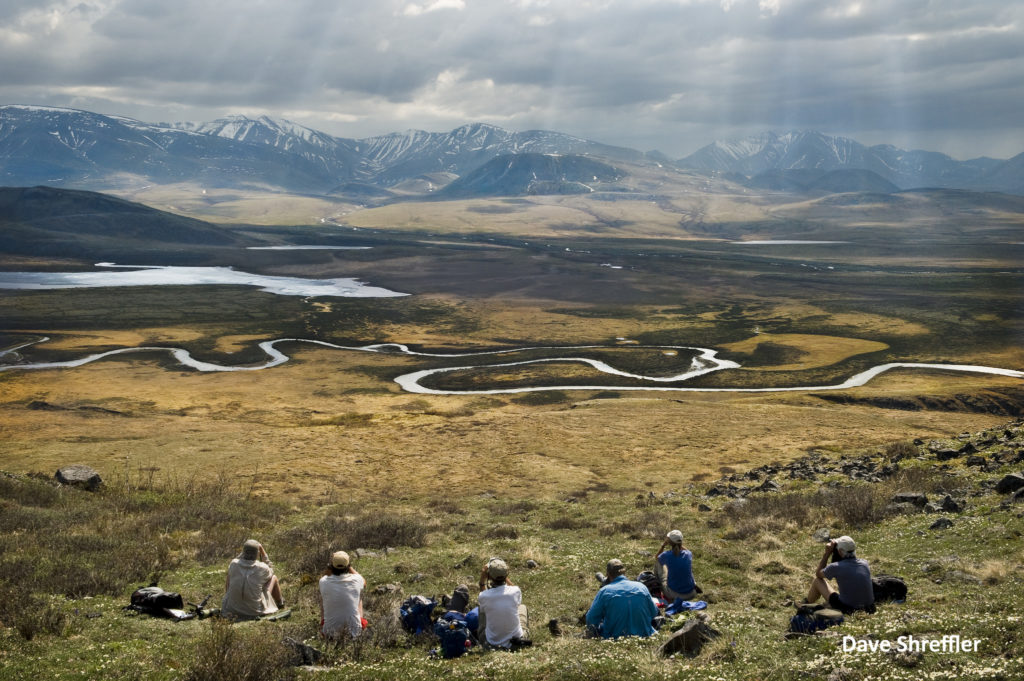In The Western Arctic, Big Things Have Small Beginnings

Above the Arctic Circle lies America’s Arctic – home to places that, by now, are surely quite familiar to a great many of us. For example, America’s Arctic Ocean – the Beaufort and Chukchi seas – provides habitat for countless species of wildlife, is central to life in coastal communities, and plays an important role in regulating the world’s climate. Sea ice continues to recede – 2014 being the 6th lowest on record, according to NASA – and Shell Oil continues to push its bumbling Arctic Ocean drilling campaign. At the same time, the Arctic National Wildlife Refuge has been in the news recently as well, as Alaska’s Senate candidates express their desire to open the Refuge to development as part of brandishing their energy-first bona fides to potential voters.
Meanwhile, in Alaska’s northwest corner, some precedent-setting developments are taking place that are concerning for those who support the preservation of America’s Arctic. The Alaska office of the Bureau of Land Management (BLM) recently issued its final plan for ConocoPhillips’ Greater Mooses Tooth Unit 1 (GMT1) project in the National Petroleum Reserve-Alaska – also known as the Western Arctic Reserve (Reserve). Why is this so important? Because GMT1 will be the first commercial oil and gas development on federal land within the Reserve, and the plan that BLM prefers will provide a dangerous model for oil development and road construction in the Western Arctic’s sensitive wetlands and tundra.
The final plan essentially gives ConocoPhillips what it seeks, which is year-round drilling and a permanent road. It discounts the environmental benefits that could be gained through more limited seasonal drilling that could better protect caribou and birds, while leaving open the option that the Reserve could one day be home to a “spider web” of roads connecting drill sites across the region.
The Reserve covers nearly 22 million acres, making it the largest single unit of public land in the nation. The area includes some of our nation’s most vital natural resources – millions of acres of wilderness-quality lands with critical habitat for millions of migratory birds, as well as grizzly bears, caribou, threatened polar bears, walrus, endangered beluga whales and more. The Alaska Native communities that live along the Reserve have maintained a subsistence lifestyle for thousands of years based on Reserve’s living resources. Within the Reserve, there are now five places that have been recognized for their exceptional biological values and have been designated as “Special Areas” – Teshekpuk Lake, Kasegaluk Lagoon, the Colville River, the Utukok River Uplands and Peard Bay.
The proposed GMT1 development is located in the wildlife-rich northeastern corner of the Reserve near the Colville River Delta, the largest and most productive river delta in northern Alaska. In close proximity to the Colville River Special Area, this is critical habitat for caribou, grizzly bears, nearly every species of fish inhabiting Arctic waters, falcons, Steller’s eiders and the yellow-billed loon. GMT1 is also in close proximity to the Teshekpuk Lake Special Area, which includes one of the most productive wetland complexes in the Arctic and vital nesting habitat for hundreds of thousands of migratory birds. The Teshekpuk Lake area is especially important to the Pacific Brant that migrate there from nesting colonies across Alaska, Canada and Russia – an estimated thirty percent of the Pacific Flyway Brant population relies on Teshekpuk Lake.
The Greater Mooses Tooth 1 project is the bellwether for all future development in the Reserve, which is why it’s critical that BLM gets this right the first time. Alaska’s Western Arctic is a world-class landscape teeming with wildlife, and BLM must set a high standard for GMT1 and any future oil and gas infrastructure in the Reserve.
